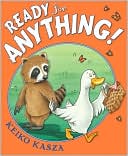Here is a song that is fun to sing in English, Spanish or both, to the tune of "Frere Jacques."Esta canción es divertida cantar en inglés, español, o ambos, al tuno de "Frere Jacques."
Hello children. Hola niños. How are you? ¿Como están? Very well thank you. Muy bien gracias. How about you? ¿Y Usted?
Although today we are having fun singing songs in two languages, talk with your children in the language that is most comfortable for you. It is best for children to know one language spoken fluently. If children know one language well, they can learn another one more easily. If you are fluent in more than one language you can choose which language to talk with your child in.
Aunque hoy nos divertimos por cantar en dos idiomas, recuerde hablar con sus niños en el idioma que usted mejor sepa. Es mejor para los niños saber un idioma con fluidez. Si los niños saben bien un idioma, es más fácil para ellos aprender otro. Si usted habla con fluidez más que un idioma, puede elegir en cual quisiera hablar con su niño.
by Katie Cunningham, http://bilingualchildrensprogramming.blogspot.com


 The eensy weensy spider fell down and scraped her knees.
"Ouch!" cried the spider. "I need some Band-Aids, please!"
"How many?" asked her mama. "I only have a few."
Said the eensy-weensy spider, "Six of them will do."
The eensy weensy spider fell down and scraped her knees.
"Ouch!" cried the spider. "I need some Band-Aids, please!"
"How many?" asked her mama. "I only have a few."
Said the eensy-weensy spider, "Six of them will do."

